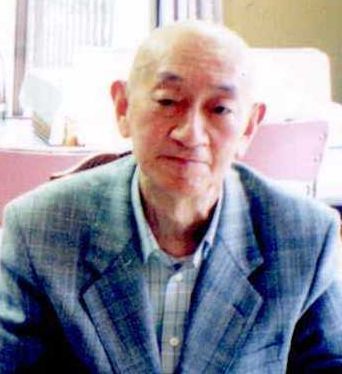 Go Seigen
Go Seigen

Go Seigen is one of the greatest go players of all
time. Although he is getting on in years, he is still
active as commentator and teacher. Pieter Mioch had the
privilege of being able to interview him, and uses the
opportunity to illuminate at the same time a slice of
modern go history.
Pieter, 31, has studied go at the local branch of the
Nihon Ki-in in central Japan. He lives with his family
in Kasugai City, near Nagoya. He is a steady contributor
of articles about the Japanese go scene for the Dutch go
association.
 Go Seigen
Go Seigen
On 26 June 1999, after two months of preparation, telephone calls, house calls, submission of personal details and so on, I was able to visit a living legend: Go Seigen.
"He is one of three go players who will still be famous several hundred years from now. The other two are Dosaku (1677-1702) and Shusaku (1829-62)."
This is Mr. Teramoto, Go's manager, expressing an opinion that is accepted generally, not just in Japan.
"Players such as Cho Chikun and Kobayashi Koichi, for example, will be quickly forgotten when other top players come and go. But Go Seigen has left too great a trail in the history of the game of go to be forgotten,"
... the gold bespectacled manager goes on to explain.
With deep respect and a slight feeling that by shaking hands with Go Seigen I was sure to become two stones stronger, I began the interview with the father of modern go. Two and a half hours later I was richer by an especially fascinating experience, but also thoroughly bewildered.
Despite his 85 years, Go Seigen is still remarkably energetic and, after the first few minutes of the interview he resolutely took the reins in his hands. I was rushed at lightning speed on a tour through Chinese philosophy, various religions, Japanese and Chinese culture, experiences from his time before the war, and much else. I have therefore chosen to use material from Go's autobiography "Ibun Kaiyu" (published in 1997) as my lodestar.
Go Seigen is the Japanese pronunciation of the Chinese name Wu Qingyuan. In this article I will continue to stick with the name Go Seigen. Go was born on 19 May 1914 as the third son in a family that had earlier made a fortune in salt commerce. Go's father was actually an official and had merely a modest income. Because it was a turbulent time, things began to go downhill for Go's family after he was born. When it became apparent that Go's talent for go was so special that they could earn a healthy salary with it, this was most welcome.
Go's father, who had enjoyed go lessons from Honinbo Murase Shuho when he was studying in Japan, passed away in 1925 when Go was eleven years old. Go was "discovered" a year later by Iwamoto Kaoru when he was visiting China. In 1928, Go came to Japan at the invitation of Baron Okura (a rich man who was behind the foundation of the Nihon Ki-in) and an important politician, minister Inukai Tsuyoshi. When I asked Go what he thought was the most memorable experience of his career, he answered without hesitation:
"The invitation to come to Japan from two of the top people in Japan. I am still very proud of the fact that these important figures in Japan came to ask a Chinese boy, would you believe, whether he wanted to come to Japan one day. Many people do not know that and think that I came to Japan off my own bat. I came here at the time as a guest, and several highly placed people in the go world, including Honinbo Shusai Meijin, came specially to Tokyo to welcome me."
When Go spoke of his arrival in Japan, his look became noticeably sharper. Although it is more than 70 years ago, he can apparently still recall the day like yesterday.
"It was a vessel of 2,500 tonnes on which we then came to Kobe, after which there was a long journey to Tokyo. We spent several days on it."
Immediately after Go arrived in Japan, he fulfilled the high expectations of him in spectacular fashion by winning three games in a row against established pros. Apart from Go himself, this surely must have been a relief for Segoe Kensaku, a top Japanese pro who was Go's teacher and who was held responsible lock, stock and barrel by Baron Okura for Go in the go world. The pity was that, because of his weak constitution, Go was forced to take it easy and his first year was not spent full-time.
In 1930 he started properly in the Oteai, the professional grading tournament and at the time the most important event. His results were frighteningly good, and anyone who had doubted his talent could now no longer do other than to admit that Go was the most sensational player of the moment. In 1932 he became 5-dan. By today's standards that is not so special, but in those days they were not so lavish with promotions, and a 5-dan then belonged to the elite. There was only a handful of players with a higher grade.
In the period from 1930 to 1961, Go was a dominant force in the go world. But occasionally he had to take time out to regain his strength and then he played less. His health was not robust, and during and after the second world war he found himself in a difficult position because of his Chinese origins. It is an incontrovertible fact that Go, in a series of matches over ten games, proved to be the strongest go player in the world. In addition to his brilliant style of play, he is known above all for a series of novelties in the opening.
Pieter Mioch can be contacted at pmioch@ma.ccnw.ne.jp